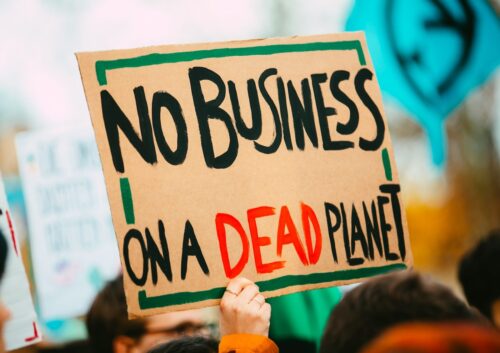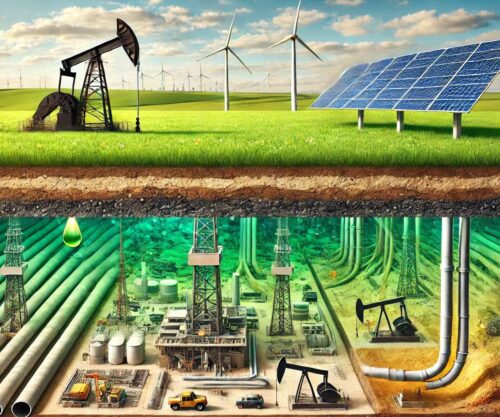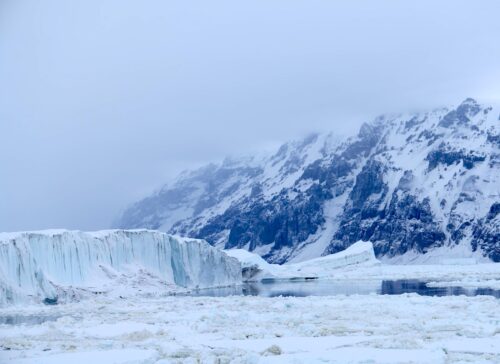
In the world of climate politics, highly pessimistic scenarios can drive headlines and coverage, and so, in turn, have an impact on policy. [emphasis, links added]
Two recent unfortunate episodes show that the rush to shout “fire” means that some scenarios are gaining massive influence when they should instead be attracting skeptical reviews of the science used to construct them.
Take wildfires. Despite repeated claims of a “world on fire”, dataset after dataset shows that the world burns ever less in terms of burned area.
Disrupting this unhelpful reality, a splashy paper in Nature last year finally found a worrying narrative: “extreme wildfire events” had more than doubled globally over the past two decades.
Using satellite data from 2003 to 2023, the authors clustered fire hotspots and tallied their “fire radiative power” – a proxy for intensity. Predictably, this ignited a media bonfire.
Outlets from The New York Times to CBS News blared warnings of a planet ablaze, seeing fiercer fires as proof that we are hurtling toward a global inferno.
Hold the extinguishers.
New research indicates that the study was wrong. The new analysis shows that extreme fire is down by 35 percent over the same period.
The fires are burning less intensely, and we already knew that less area is getting burned as time goes by – but this contradicts the extreme climate script, so we heard crickets from major media outlets.
There’s more good news we are not hearing much about: 2025 is shaping up as one of the least fiery years on record across most areas of the world.
Total burned area in Africa, the Americas, Asia, and Europe is dramatically down compared to previous years – potentially the lowest in the 21st century if the trend holds. We should celebrate this as evidence that adaptation and better land management are working.
Instead, such news is buried because it doesn’t align with the orthodoxy of economy-crushing climate policies.
The biggest advert for those policies was last year’s bombshell study – also in Nature – claiming that global real income will be 19 percent lower by 2050 than it would have been with no climate change and 62 percent lower by 2100.

Alarmingly, the research became the go-to damage estimate for the Network for Greening the Financial System (NGFS), a powerhouse coalition of central banks and regulators spanning the US, EU, Japan, and beyond.
For decades, solid economics – from Nobel laureate climate economist William Nordhaus and others – has painted a clear picture: climate change is a serious but manageable economic issue, costing 2-3 per cent of global GDP by century’s end.
That is the same as enduring one or two recessions over 75 years – hardly societal collapse. But the new research seemed to indicate that the economic damage caused by climate change would be far worse than had been thought.
The UK Office for Budget Responsibility and others cited it in important ways because it aligned with their bias toward the narrative of apocalypse.
Now, several peer-reviewed takedowns – again published in Nature itself – are ripping the new science to shreds, as even the [Washington Post] has acknowledged.
Errors abound: most of the suggested economic damage disappears once data from Uzbekistan is removed from the calculations. The estimated climate impact, correctly analyzed, is statistically indistinguishable from zero.
But the damage is already done.
The NGFS, which was co-founded by former Bank of England governor and now Canadian prime minister Mark Carney, has the important role of stress-testing financial systems, and it has been using these unfounded disaster costs to regulate banks, potentially triggering unnecessary regulations that could stifle growth.
As climate researcher Roger Pielke Jr. notes, the NGFS has a history of cherry-picking outlier damages over sober estimates – suggesting that the NGFS needs a root-and-branch overhaul of its approach to climate science. Scientific publishing itself needs to take a look in the mirror.
The key takeaway from the two episodes is that it’s important to turn to comprehensive data – and that goes for the media, too.
Read rest at The Telegraph



















There’s no correlation between the number of wildfires, acres burned and the global average temperature. 90% of wildfires are manmade and some are arson. A slightly warmer average temperature does not cause humans to start more fires. Global warming has caused increased precipitation. That could have effect on wildfire acres burned.
Global acres burned by wildfires are unreliable before the use of satellites in about 2000
What makes wildfires worse is the lack of managing the forests by removing dead trees and undergrowth that accelerates the size of the fires. But environmentalists have prevented such actions.
The facts t hat back in the 1970’s is was Global Cooling and a New Ice Age leftists rags like Time and Newsweek were giving it Top Coverage and episode of In Search Of back in 1978 did a episode all about the Coming Ice Age and the Hard Winter of 1976/77 that hit Buffalo New York